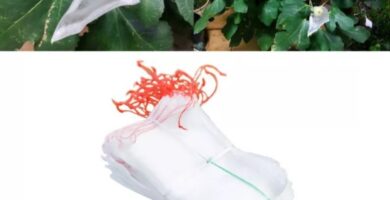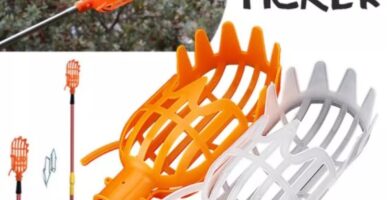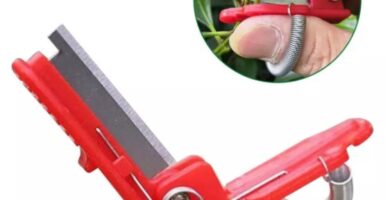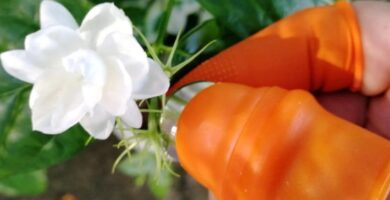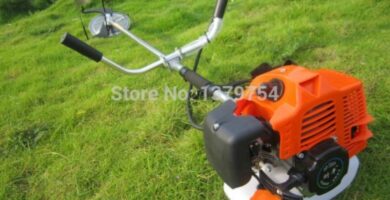
Guide, methods and basic concepts
In this article we will teach you how to grow the Dragon Fruit plant. You will learn to differentiate the different species and varieties, the morphological and botanical characteristics of the plant (root, stem, flower, fruit), how it is grown (by seeds and/or cuttings) and finally its disadvantages, pests and diseases.
The pitahaya plant belongs to the cactus family and is known worldwide as “dragon fruit.” Its fruit is sweet and refreshing, as well as rich in fibers, essential minerals, simple sugars (oligosaccharides) and antioxidants such as betalains, which is why its cultivation has currently aroused growing interest as a food, and as an industrial and economic resource.
Origin of the Dragon Fruit plant
This plant with gourmet fruits is native to forested regions of North, Central and South America and is known in Latin America by the common name of pitahaya or pitaya (Esquivel, P. 2004).
Dragon Fruit varieties: taxonomy
In scientific terms, the varieties of this plant are grouped into two genera: Selenicereus and Hylocereus; and the best known and appreciated species worldwide are Selenicereus megalanthus (yellow dragon fruit), and Hylocereus undatus (red dragon fruit), which is the most studied, due to its wide morphological, physiological and genetic variation (Janick, J. 2010).
Since 1980 efforts have been made to cultivate cacti of the genera Hylocereus and Selenicereus.
Hylocereus undatus: the red dragon fruit
The red pitaya or red dragon fruit plant (Hylocereus undatus) is a climber, with triangular stems and pink flowers; although it is more attractive in appearance, the red dragon fruit is more delicate and vulnerable to damage in the post-harvest phase (Becerra, 1986).
Within the Hylocereus genus, a total of 14 species are grouped, the most representative being Hylocereus undatus, H. polyrhizus, H. costaricensis, H. triangularis and H. purpusii, all traditionally known as red dragon fruit.
These are cultivated mainly in Central America, some regions of Mexico and Israel (Esquivel, P. 2004)
Due to its potential, Hylocereus has been introduced for commercial purposes in the Bahamas, Bermuda, the United States (Florida and California), Australia, Thailand, India, China, Taiwan, the Philippines, Malaysia, Vietnam, Indonesia, Cambodia, Israel and other countries. For its part, H. undatus has taken on great commercial value in Southeast Asia (Nerd et al., 2002).

Selenicereus megalanthus: the yellow dragon fruit
The yellow pitahaya or dragon fruit (Selenicereus spp.), with 20 species (Tel, Z. 2004) has commercial value in South America in countries such as Bolivia, Peru, Ecuador, Colombia and Venezuela.
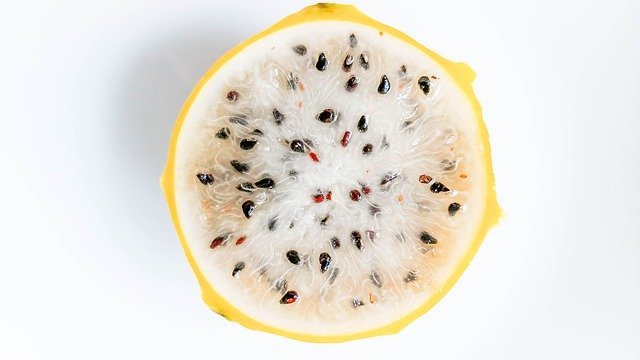
For its part, Colombia is the main supplier of yellow dragon fruit in the world, followed by Israel and Mexico. The Netherlands, Germany, France and the United Kingdom are the main countries for exports of Colombian dragon fruit (García, M. 2003).
The yellow dragon fruit species (Selenicereus megalanthus) climbs on trees and rocks; the flowers are white; the angle between the buds of cacti is concave. This characteristic allows us to differentiate it from the red dragon fruit, in which the angle between the buds is convex.
The yellow dragon fruit is of greater agronomic interest because its fruits are sweeter than those of the red dragon fruit; In addition, they are more resistant in the postharvest stage, especially in transport and storage (Becerra, 1990; García, 2003).
Moreover, Forero et al. 2008 indicates that the shelf life of the yellow dragon fruit lasts four weeks, or twice the duration of the red pitaya, which is two weeks.
Botanical characteristics of the plant
Stem
Pitahaya or dragon fruit plants are made up of a xerophytic, phylloclad, triangular and succulent green stem that assumes photosynthetic functions due to the abundant presence of chloroplasts.

They have three edges, they are concave on the sides, with areoles on their edges, which have groups of spines from 2 to 4 mm, considered as modified leaves (García, M. 2003).
The dragon fruit is a perennial, climbing plant, because the stem prevents them from supporting themselves; in their natural environment they use the trunk of a neighboring tree, rocks or in nurseries they use tutors as a support.
Root
Plants that grow in this way are called hemiepiphytes; that is, they grow on the trunk of a tree and their root maintains contact with the ground but they also develop aerial roots to support themselves on the trunk (Rodríguez, C. 2000).
Flowers
The flowers have the peculiarity of opening only once during the night hours, in a period of one hour to an hour and a half after the sun goes down, and they close approximately six hours after sunrise (Weiss et al., 1994). which is why it is known as “queen of the night.”

Other characteristics of its flowers are that they are hermaphrodite and actinomorphic, they are inserted directly on the stems, they have a tubular shape, they are large (from 20 to 40 cm in length and up to 25 cm in their largest diameter), and the male sexual whorl is made up of numerous spirally arranged stamens that produce pollen grains.
The gynoecium ovary is inferior with numerous carpels that extend into a single style covered by scaly bracts.

The sepals are yellow; the petals white, yellow or pink (Weiss, J. et al., 1994). This flower, in addition to being showy, has a nectarial chamber, since it exhales a delicate fragrance with the smell of bananas and vanilla, making it very attractive to pollinators.
Natural pollination is carried out by bats that visit the flowers at night, and by bees during the day, attracted by the nectar they produce.
The flowers are trumpet-shaped; at the beginning they are in an erect position and when they open they direct their position towards the light.
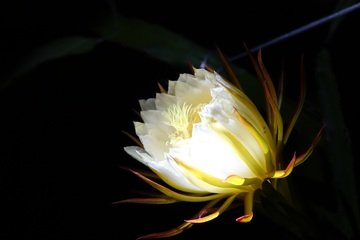
Once pollinated, the flowers take a hanging position and last a few hours; the formation of the fruit, from pollination to the harvest stage, takes between four and eight months, depending on the temperature (Becerra, 1990; García, 2003).
The budding period from the areola to the open flower lasts from 45 to 50 days; from open flower to fruit is 100 to 120 days (Becerra, 1987).
Fruit
Its fruit is a globose or subglobose berry (dehiscent in Hylocereus and indehiscent in Selenicereus), measuring on average 8 to 15 cm long and 6 to 10 cm in diameter. Unlike the fruits of other cacti, such as the prickly pear, its fruit does not have thorns, instead it exhibits very showy bracts (Montesinos, J. et al., 2015).
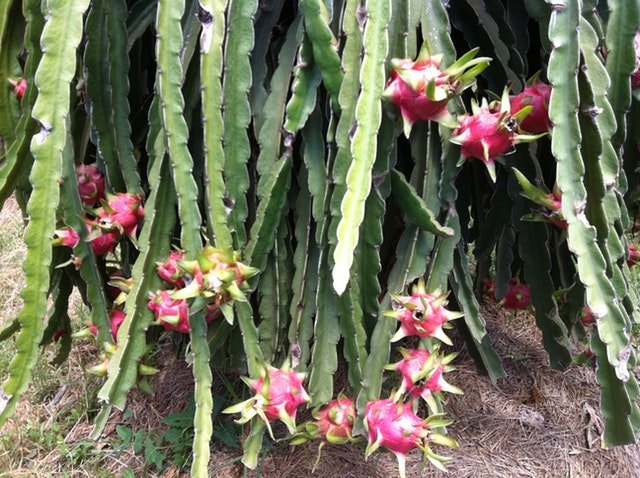
The ripening of the fruit is the process where the fruit reaches the sensory characteristics suitable for consumption. This occurs as a result of the deep metabolic and chemical restructuring that takes place during the maturation process and concludes in evident changes mainly in color, flavor, smell, and texture (Alvarado-Romero, 2014).
The fruits complete their development in 39 to 52 days, counted from the opening of the flower bud until they reach maturity for consumption on the plant (Weiss et al., 1994). The maturation of the fruit begins with a reddish coloration and ends with the fall of the fruit; to avoid the latter, growers harvest at an intermediate stage.
Cultivation or Propagation of Dragon Fruit
Dragon fruit is propagated sexually and asexually by cuttings or grafts; Although the seed has good germination power, it is not recommended for planting since the plant from seeds tends to degenerate (Becerra, 1986).
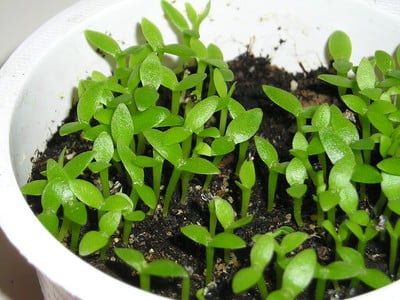
Quellenangabe / Credit: Maja Dumat
Creative Commons Licence BY 2.0
According to Gunasena, H. et al. (2010) in the dragon fruit, the main form of propagation is vegetative, from the stems, cuttings or cladodes. This is done naturally through the separation of the stems, and in the case of cultivated plants, by direct transplantation in the ground or its placement in bags with substrate until the formation of new stems.
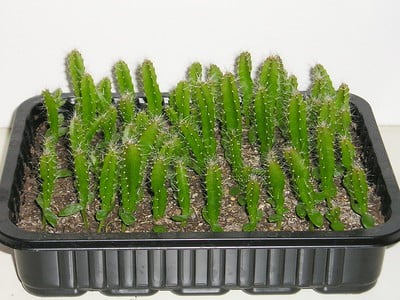
Quellenangabe / Credit: Maja Dumat
Creative Commons Licence BY 2.0
They also reproduce by means of seeds, spread by birds and other animals — fundamentally, bats in the case of red dragon fruit (Osorio, O. et al. 2001); however, for cultivation purposes, sexual propagation is not recommended, since the plants require too much care while transplanting and take four to six years to reach their reproductive stage (Gunasena, H. et al. 2010).
The importance of dragon fruit cultivation is evidenced by the great genetic variability, adaptability to various environmental conditions, productivity, and profitability.
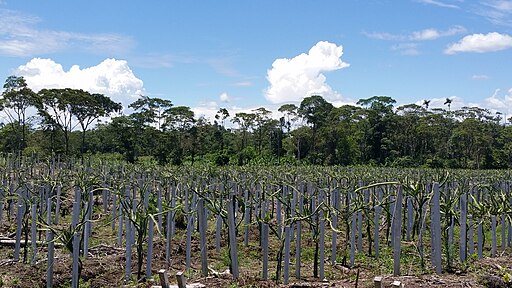
It is a crop with great adaptability to environmental conditions, profitable and in demand in regional and international markets.
Disadvantages
Becerra (1990) reports that, in the first plantations, the cultivation of dragon fruit showed its rusticity. As crops increased, pest and disease problems arose that currently require greater control.
The presence of numerous pest insects is affected by the appearance of some pathogens that affect fruit production, generating preferences in crops.
Diseases
Dragon fruit stem soft rot is a disease associated with two bacteria, which is present in some producing regions of the species H. undatus and H. purpusii.
Bacterial action induces rot after 15 days of its presence in the crop.
The undatus species is the most susceptible, due to the deficiency of Ca and N, which favors the development of the pathogen. In general, the severity of this condition in dragon fruit plants is associated with nutritional deficiencies (Valencia, B. et al., 2003).
Among the most important diseases of fungal origin, anthracnose (Colletotrichum gloesporoides) is reported with an incidence of 16.6%, basal rot (Fusarium oxysporum) with 29.3%, sooty mold damage (Cladosporium) 34.2%, wilt (F. oxysporum) with 36.6%, stem rot (F. oxysporum) with 47.5% and fruit scab with 48% (Becerra, 1990).
Pests (Insects)
Regarding pests and insects, the fruit fly or South American fly (Anastrepha fraterculus Wiedemann) is one of the biggest problems in dragon fruit crops.
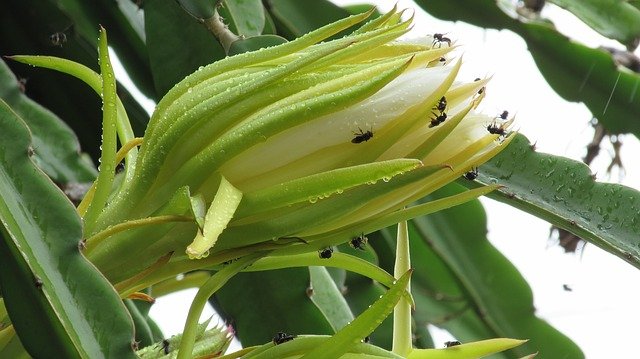
The damage is caused when the adult fly oviposits in the flower and when the larva hatches and feeds inside the ripe fruit; the pulp turns brown, being darker towards the outside of the galleries; in addition holes form in the stem (Becerra, 1990; Rodríguez et al., 1993; García, 2003).
Other insects that negatively affect dragon fruit cultivation have also been reported, such as the stem and fruit borer (Lepidoptera, Pyralidae), the stem miner (Lepidoptera, Gracilaridae), Ceratitiscapitata and Anastrephaludens; the arrieras or cutter ants (Acromyrmexocto espinosus) and the fire ants (Solenopsis geminata) (García, 2003).
Other related products for cultivation
References:
- Esquivel, P., & Araya, Q. Y. (2012). Características del fruto de la pitahaya (Hylocereus sp.) y su potencial de uso en la industria alimentaria. Revista Venezolana de Ciencia y Tecnología de Alimentos, 3(1), 113-129. (PDF)
- Montesinos, J., Rodríguez, L., Ortiz, R., Fonseca, M., Ruíz, G., y Guevara, F. 2015. PITAHAYA (Hylocereus spp.) un recurso fitogenético con historia y futuro para trópico seco Mexicano. Cultivos Tropicales, vol. 36 (no.especial), 67-76. (PDF)
- Becerra, L. (1986). The cultivation of pitaya. Bogota: National Federation of Coffee Growers of Colombia (PDF).
- Becerra, L. (1987). Pitaya: a crop with a future. Modern Horticulture, (5):7-10. (PDF)
- Esquivel, Patricia. 2004. Los frutos de las cactáceas y su potencial como materia prima. Agronomía Mesoamericana. 15(2):215-219. (PDF)
- Esquivel, Patricia; Stintzing, Florian C. and Carle, Reinhold. 2007c. Phenolic compound profiles and their corresponding antioxidant capacity of purple pitaya (Hylocereus sp.) genotypes. Zeitschrift für Naturforschung. 62c(9/10):636-64 (Fuente)
- Forero, A., Medina, J., García, M. y Reinel-Garcia, H. Diseño y construcción a nivel piloto de un sistema de almacenamiento para pitaya. Corpoica Cienc Tecnol Agropecuaria 2008; 9(1):40-55. (PDF)
- Gunasena, H . P. M . ; Pushpakumara, D. K. N. G. y Kariyawasam, M. ‘‘Dragon Fruit Hylocereus undatus (Haw.) Britton and Rose’’. En: Pushpakumara D. K. N. G., Gunasena H. P. M., y Singh V. P., Underutilized fruit trees in Sri Lanka, edit. World Agroforestry Center., New Delhi, India, 2010, pp. 110–142, ISBN 978-955-9224-33-4. (Fuente)
- García, M.C. 2003. Pitaya: harvest and postharvest. Bogotá: Corpoica-Pronatta. Ministry of Agriculture and Rural Development (PDF).
- Janick, J. Horticultural Reviews. vol. 18, edit. John Wiley & Sons, 22 de junio de 2010, 402 p., ISBN 978-0-470-65059-2.
- Osorio, O. R.; Varela, G.; Matínez, C. L. y Morales, J. E. ‘‘The effect of substrate and age of transplant on the establishment of Hylocereus undatus Haworth’’. Cactáceas y Suculentas Mexicanas, vol. 46, no. 1, 2001, pp. 4–15, ISSN 0526-717X.
- Quintero, M. L (25 de octubre de 2020) “Cómo sembrar pitaya” recuperado de pitaya.store.
- Rodríguez Canto, A. Guía Técnica para la producción de plantas de pitahaya en viveros [en línea]. edit. Universidad Autónoma de Chapingo, Chapingo, México, 1997, 70 p., ISBN 968-884-432.
- Rodríguez, C. A. ‘‘Producción y comercialización de pitahayas en México’’. Claridades Agropecuarias, no. 82, 2000, pp. 3-22, ISSN 0188-9974. (PDF)
- Valencia, B. A. J.; Cruz, H. P. y Rodríguez, C. A. ‘‘Avances en la etiología y manejo de la pudrición blanda de tallos de pitahaya, Hylocereus undatus H. (Cactaceae)’’. Fitosanidad (Cuba), vol. 7, no. 2, 2003, pp. 11–17, ISSN 1562-3009, 1818-1686. (PDF)
- Weiss, J.; Nerd, A. y Mizrahi, Y. ‘‘Flowering Behavior and Pollination Requirements in Climbing Cacti with Fruit Crop Potential’’. HortScience, vol. 29, no. 12, 12 de enero de 1994, pp. 1487-1492, ISSN 0018-5345, 2327-9834. (PDF)

Biólogo – Universidad de Oriente – núcleo de Sucre. Venezuela (2013). Profesora de Biología hasta el 2018 de la Universidad de Oriente – núcleo Bolivar. Certificada en gestión de calidad e inocuidad alimentaria ISO 22000 y gestión de la calidad en laboratorios ISO 17025. Actualmente vive en Ecuador. Senescyt Nro. 8622122546
May 13, 2024
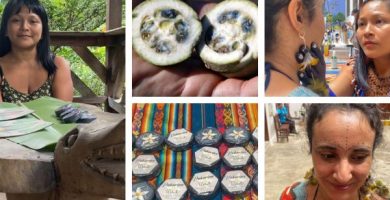
12 reasons why using wituk (Genipa americana)
February 9, 2024

The collagen industry and deforestation in the Amazon: discover sustainable alternatives
August 12, 2022
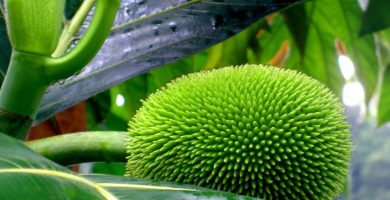
Breadfruit Tree (Artocarpus altilis)
October 29, 2020
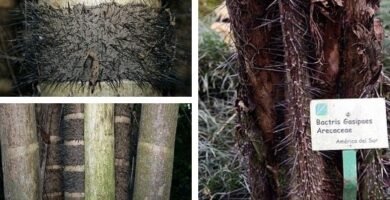
Chonta or chontaduro (Bactris gasipaes)
October 2, 2020
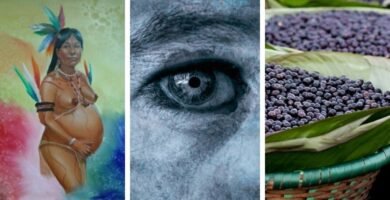
Acai, the tragic legend of the palm tree that saved an Amazonian tribe
September 18, 2020
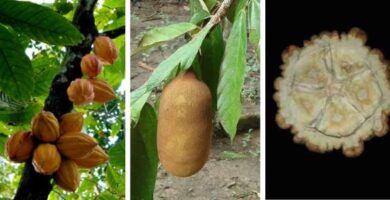
Theobroma (genus): cocoa, grandiflorum, bicolor (+ 22 species)
September 2, 2020
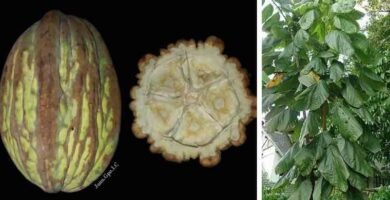
Mocambo (Theobroma bicolor) The Jaguar Tree
June 21, 2020

Sacha Inchi (Plukenetia volubilis L.) The Inca Peanut – Benefits
June 18, 2020

Pitomba, a fruit with surprising medicinal properties!
This post is also available in:
![]() Español (Spanish)
Español (Spanish)


